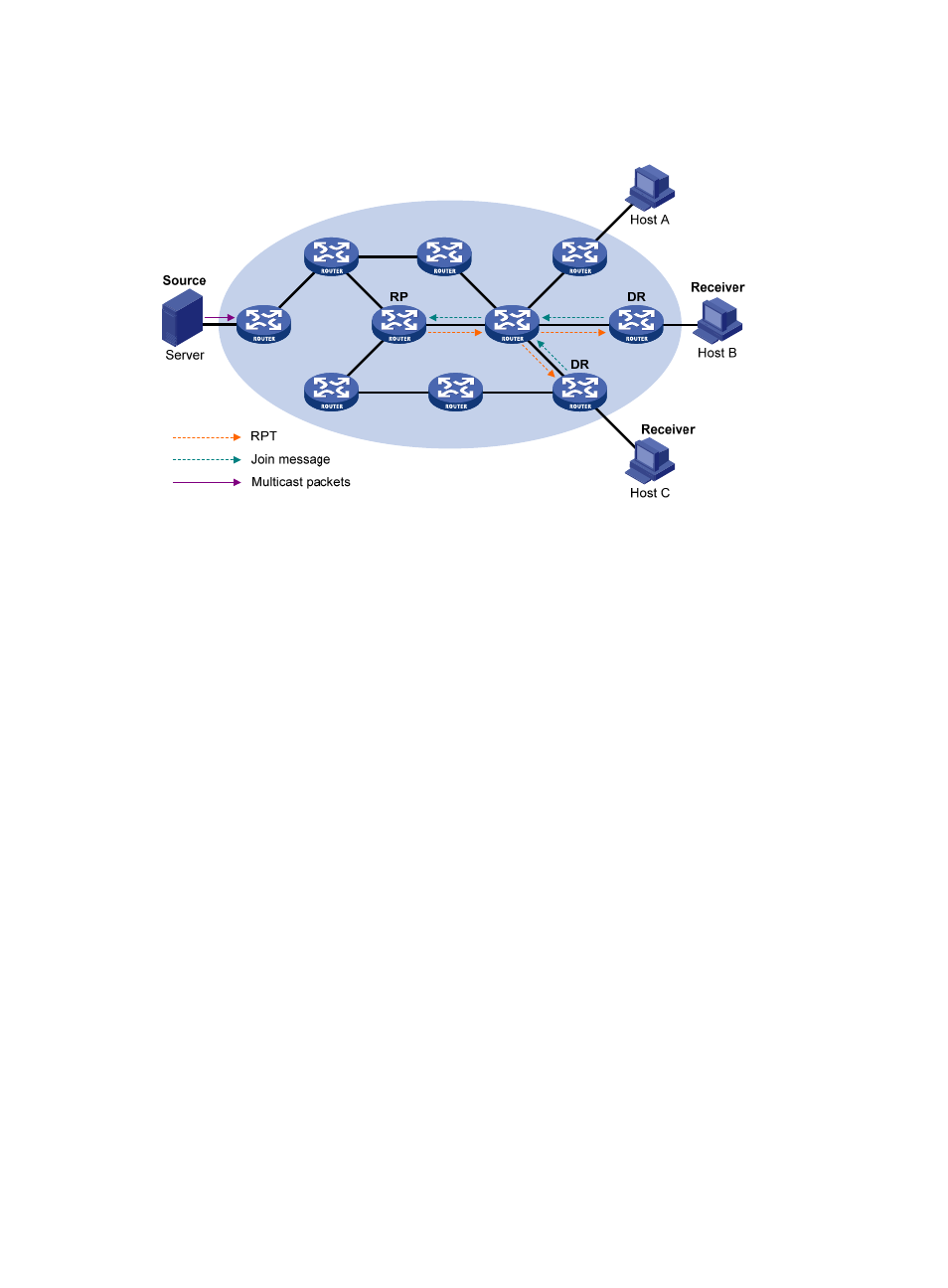Rpt building, Multicast source registration – H3C Technologies H3C S10500 Series Switches User Manual
Page 148

133
RPT building
Figure 44 RPT building in a PIM-SM domain
As shown in
, the process of building an RPT is as follows:
1.
When a receiver joins multicast group G, it uses an IGMP message to inform the directly
connected DR.
2.
After getting the receiver information, the DR sends a join message, which is forwarded hop by
hop to the RP that corresponds to the multicast group.
3.
The routers along the path from the DR to the RP form an RPT branch. Each router on this branch
generates a (*, G) entry in its forwarding table. The asterisk means any multicast source. The RP is
the root of the RPT, and the DRs are the leaves of the RPT.
The multicast data addressed to the multicast group G flows through the RP, reaches the corresponding
DR along the established RPT, and finally is delivered to the receiver.
When a receiver is no longer interested in the multicast data addressed to multicast group G, the directly
connected DR sends a prune message, which goes hop by hop along the RPT to the RP. After receiving
the prune message, the upstream node deletes the interface that connects to this downstream node from
the outgoing interface list and determines whether it has receivers for that multicast group. If not, the
router continues to forward the prune message to its upstream router.
Multicast source registration
The purpose of multicast source registration will inform the RP about the existence of the multicast source.